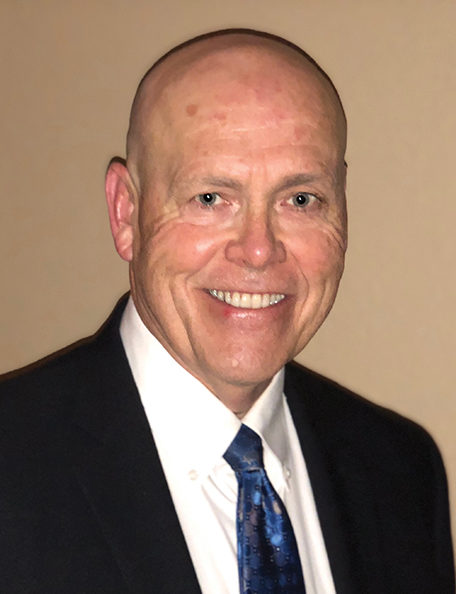The market for generic injectables continues to be plagued by prolonged drug shortages on mission critical medications. This serves to threaten patient safety and the ability of medical professionals to consistently provide quality care. In addition, healthcare providers are forced to manage unpredictable medication prices, creating unnecessary hurdles in delivering cost-effective care.
In order to mitigate these concerns for its members, HealthTrust Pharmacy Services launched the Supply Interruption Mitigation Strategies (SIMS) program. SIMS will enable HealthTrust to protect against supply interruptions and sudden, often severe, price increases.

“Shortages keep health systems scrambling for mission-critical drugs,” says Mark Parmenter, PharmD, regional director of pharmacy, clinical and ancillary services at Scripps Health. “Not only is it difficult to keep certain drugs in stock, but pricing goes up with the lack of availability. Shortages take a lot of time from a systems perspective, with many resources going toward trying to source drugs as opposed to doing other things to assist patients.”
As a member of the operations committee for the HealthTrust SIMS project, Parmenter has helped identify the top drugs to target first and compile a wish list of products to target in the future. “We’re expecting the HealthTrust SIMS program to not only alleviate some of the shortages for the individual products identified in this first roll-out, but when we complete agreements for additional products, it will be a significant improvement to pharmacy operations,” he says.
The first SIMS product will be the antibiotic Cefazolin in 1 gram vials, which has experienced shortages recently.

“The Cefazolin shortages have only served to highlight the importance of this product, regardless of whether you work at an ambulatory surgery center or a hospital,” says HealthTrust CMO John Young, M.D., MBA, CPE, FACHE. “HealthTrust is pleased to be able to bring this SIMS product to market—especially at a time when the need for a drug shortage solution is paramount.”
Greater Transparency & Security
HealthTrust can provide this kind of security thanks to its committed GPO business structure and its innovative contracting, Young adds. Just as the FDA places a Risk Evaluation Mitigation Strategy (REMS) program on products that require additional safety mechanisms to ensure appropriate use, HealthTrust can apply its SIMS contracting strategy to mission-critical products.
Benefits that will accrue to members and suppliers include:
- Firm pricing: Establishing a stable, competitive price through the life of the contract.
- Safety stock: Dedicated product reserves (oftentimes up to 90–120 days’ worth) available only to HealthTrust members to help augment supply in case of a shortage.
- Creation of a unique HealthTrust SIMS National Drug Code (NDC) number for members: A unique NDC, just for HealthTrust members, to make ordering products and managing drug shortages easier.

The SIMS program is based on bringing greater transparency and partnership to the supply chain, explains Mark Walsh, PharmD, HealthTrust’s director of clinical pharmacy strategy. “We have identified market predictors and pain points that combine to create cycles of drug shortages and accompanying price increases. The HealthTrust SIMS program aims to break that cycle,” he adds.
The SIMS program is based on the quality, viability and sustainability of manufacturers’ supply chains coupled with HealthTrust’s innovative contracting. “We feel this approach gives us benefits and additional protections that are not available if volume is divided among multiple manufacturers,” Walsh says.
In order to be considered for a SIMS contract, manufacturers must provide detailed information about the supply chain for each product. Mapping out the supply chains will enable HealthTrust to identify the optimal supply chain for mission critical products, which often includes manufacturing and API redundancies, geographic diversification and the quality profile of the vendors supplying critical products along the supply chain.
In the past, manufacturers often claimed their supply chain had redundancies when a product could be run on multiple lines in a single manufacturing location. This local redundancy still makes them vulnerable to shutdowns for issues such as regulatory concerns or natural disasters.
In 2017, for example, the shutdown of a single plant interrupted the supply production of more than 130 presentations of drugs, Walsh explains. Under the SIMS program, HealthTrust will strive to partner with suppliers that demonstrate true manufacturing redundancy at geographically distinct plants.
API Scrutiny
HealthTrust will also consider the quality and redundancy of a manufacturer’s sources of API—Active Pharmaceutical Ingredient—in deciding whether to award a SIMS contract, Walsh says. Because a large number of API suppliers are located in China and India, the perception, until recently, is that they are under a lower level of FDA scrutiny. Recent examples of serious quality control concerns at these locations have resulted in vulnerabilities to the supply chain of mission-critical medications.
There are fewer API providers than drug manufacturers, so a supply interruption can have far-reaching effects. To qualify for a SIMS contract, Walsh explains that manufacturers must have either multiple API providers or the potential to make their own API—also known as vertical integration.
SIMS contracts will require safety stocks for members and a unique NDC number. In traditional contracts, if a drug is in short supply, it is often allocated to purchasers from the wholesalers based on historical purchasing patterns.
A safety stock is a mechanism that the SIMS program employs to create a buffer for its membership to either weather a short-term supply interruption or provide a runway for HealthTrust to implement additional strategies to address projected long-term supply issues. The unique SIMS’ NDC allows for the safety stock to be allocated directly to HealthTrust members either through standard wholesalers or through its controlled channel relationship.
In return for such assurances from manufacturers, SIMS contracts with manufacturers will last five years instead of the usual three. This is possible because of HealthTrust’s committed GPO model.
“Our members are making commitments to purchase a specific volume of products over time, and we will monitor pull-through,” Walsh explains. Suppliers can plan purchasing and production schedules further out, which will help them control costs and weather market changes.
“The most important criteria in judging the success of a SIMS contract will be, ‘Do members have the drugs they need, when they need them at the expected price,’ ” Walsh adds.
Member Input
HealthTrust members were heavily involved in compiling an initial list of 76 drugs they consider most important for SIMS protections. Members discussed and voted on the most appropriate drugs for their needs.
“The list was organically generated by our members,” Walsh notes. “This enables us to negotiate with a vetted list of products, which increases the confidence of manufacturers in agreeing to our contract requirements. The list will continue to evolve from ongoing member input.”
The SIMS list includes the high-demand, high-use drugs utilized in anesthesia, surgery and critical care that are essential to members’ operations. In some cases, there are no adequate substitutes, or the supply of substitutes may be inadequate. Patient care and safety is a primary concern in all cases. Changing therapy or using unfamiliar products can increase the risk of medical errors or result in less effective treatment.
The SIMS list is a different approach than many others are taking in the market. Instead of trying to only address drugs that have experienced shortages and pricing instability, HealthTrust’s SIMS program is looking to proactively identify those mission-critical products which, whether or not they have had issues, are products that its members simply do not want to ever be without.
HealthTrust has been testing and refining the SIMS program approach for several years. There are others in the marketplace also trying to solve the shortage problem. Walsh adds, “But I believe that as a result of HealthTrust’s committed model and how we function as a group purchasing organization as a whole, we’re set up for success in ways that none of the other entities who are trying to do this are.”
Share Email Q3 2019, SIMS





